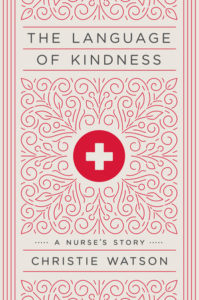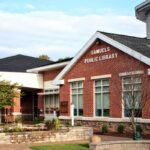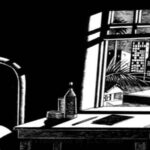Life and Death in the Neonatal Intensive-Care Unit
On the Disciplined Nurses Caring for Fragile, Premature Babies
Give me a child until he is seven and I will show you the man.
–Aristotle
![]()
The very best thing about being a children’s nurse is that part of my job is cuddling babies. I love working in special care. The Neonatal Intensive-Care Unit (NICU) that also houses the Special-Care Baby Unit (SCBU) is the area of the hospital that admits premature babies, plus babies immediately from birth. Most of the babies here are teeny-tiny scraps of things, simply born too soon. Some of them spend many months here, and have various complications of prematurity. I once looked after a baby who had spent more than a year on a special-care unit and was still newborn-size.
All NICUs have coded doors: women try to steal babies from hospitals. There’s a blurry photograph on the wall of the coffee room of a woman identified as a risk, with text from the security department to accompany the photograph: “If you see this woman, please contact security immediately. She is considered dangerous and has tried to enter wards disguised as a nurse.” I often stare at the photograph while I drink my morning coffee and wonder about her story, what led her to such desperation.
I enter the code for the door and push it open with a heavy click; immediately I’m confronted by the sour tang of breast milk, along with a blast of overwhelming heat. The unit is kept hot all year round. I’m glad of the loose cotton scrubs I wear (instead of the thicker nurse’s dress worn in other wards) and the clogs, which allow my feet to breathe. I walk past fridges containing mainly drugs, past the transparent cupboard filled with drawers of consumables: bandages, needles, stickers, cardboard trays, endotracheal tubes, suction catheters, dressings, miniature woollen hats (knitted mostly by retired volunteer women, many of whom are ex-nurses from organizations with grand titles, such as the League of Nurses). There are noticeboards with information about research and doctors’ rotas, and a large section of wall is taken up with Thank You cards:
We stayed in the unit for five months. It was the longest five months ever but, thanks to the nurses’ humor and kindness, we kept our sanity!
Thank you to Carol, Mo and the team for putting up with my husband’s jokes (and for SAVING the lives of our twin boys).
For the doctors and nurses of special care. We will never forget you.
To Maddie, the bereavement midwife. You helped us through the worst time of our life. We will treasure the memories you let us make during Annabelle’s short time. Thank you is not enough. But there are no words.
A locked drugs cupboard stands next to the Thank You cards, with a large black-and-red book balanced on top of the drugs trolley, the Controlled Drugs book, enabling careful monitoring of any addictive drug such as morphine, which has to be signed in and out by two nurses, in case it is stolen. Addiction is common among nurses and doctors. There is no up-to-date or conclusive information regarding statistics, but a survey some time ago by Alcohol Concern and Drugscope, on the misuse of drugs and alcohol by NHS staff, suggested that 60 percent of employers across all sectors had employees with alcohol problems, and 27 percent with drug misuse. I can only imagine that figure has increased. Of course it’s mostly low-level partying and drinking too much. A work hard, play harder mantra; a 999 night at the Ministry of Sound in Elephant and Castle, an example of frontline staff letting off steam; the regular club nights now organized by five medical schools, offering the chance to drink to excess with other frontline staff—and I’d imagine a good few of those medical students and nurses take drugs in the same way as, if not more than, any other young people in nightclubs.
“These babies are fragile, on the edge of life, somewhere between worlds.”
But there is something deeper than that for NHS staff who have been in the job for many years. A GP I know of mine regularly sees NHS staff who are battling addiction and depression. “I try and see them once a week,” she says. “The doctors particularly are a very high suicide risk. They’re so highly stressed and have easy access to everything. And they don’t attempt suicide. They do it.” Despite easy access to drugs, anaesthetic agents of sedation and paralysis, for example, I’ve known of a couple of doctors and nurses who have had serious addiction issues and who have ended up committing suicide without those drugs, in dramatic and violent ways. There is now a 24-hour hotline for doctors who need counseling, run by the General Medical Council. I don’t know of any equivalent for nurses, though. There’s often talk about the random drug-testing of doctors and nurses, but of course it’s never been instigated—there would be no NHS.
I walk past the ward office and the large main area with six babies on life-support machines, with ventilators doing the work of the babies’ underdeveloped lungs, and dozens of beeping noises and nurses bustling between them; then the SCBU nursery to my left, where the babies are not as sick, require less support and so have a higher baby-to-nurse ratio. The contrast between the two sides is immense, the walkway between them like a border separating two countries: NICU politically unsafe, and SCBU more stable and quieter. All of the babies on the NICU side are ventilated—that is, on life-support machines and intubated with breathing tubes, the endotracheal intubation first described by Hippocrates (460–375 bc).
NICU is noisy, despite the nurses’ best efforts. Sensory overload has long been recognized as having a significant negative effect on a baby’s future development, the sound and light exposure leading to sensory-processing problems and learning difficulties. Still, the NICU room is electric, bright with overhead lights, and noisy with the slamming of bins; the nurse having to think over the background buzzing of the oscillators, the sounds of suctioning and alarms. But the babies do not always startle: a testament to how sick they are. The fundamental reflexes that should be involuntary are absent. The nurses try and limit sound and noise by speaking in whispers, dimming the lights and placing towels over the tops of incubators at certain times of day. But this, too, may have a negative effect. Premature babies’ auditory cortex is at a crucial stage of development: we need to hear language in order to learn it. But most of the environmental noise is white noise: chugging, banging, suctioning. These babies are fragile, on the edge of life, somewhere between worlds; they have immature lungs and a lack of surfactant—the substance that keeps the air sacs in the lungs open. They have yet to develop proper immune systems; their kidneys do not yet work properly and their gastrointestinal systems are fragile. The babies are at high risk of bleeding to the brain.
Neonatal nurses respond by being regimented. If babies thrive on and love routine and structure, then these nurses reflect that even more. You can tell, if you’ve worked around nurses for long enough, their speciality and which department they work in. Later in my career I spend a long time teaching multidisciplinary groups of nurses from all areas of the hospital, and it always surprises me that I can tell an A&E nurse from a scrub nurse, from a neonatal nurse. But I can. In a room full of nurses training in resuscitation, a friend and I run a poll to see if we can correctly guess where people work, based on where in the room they choose to sit. The nurses at the back looking terrified are scrub nurses: they are task-orientated and have little contact with patients; they have a high rate of failing the training and having to redo it. The nurses at the front are often intensive-care or A&E, ready to question the trainers, rather than the other way around. The nurse specialists sit at the sides and lean back in their chairs, looking bored. The late-comers, sadly, are healthcare assistants from medical wards and care of the elderly wards, or doctors who look annoyed at having to attend training with nurses and invariably ask to leave early, to attend to more important matters. There is always a nurse who sleeps during the training, to the extent that they are asked to stand in order to keep awake. Even then, sometimes they close their eyes while standing.
Neonatal nurses seemingly never get tired. They are often small and quick and fit. They flit from baby to baby and can multitask like nobody’s business. Control and timing are everything. They are in charge and, regardless of how sick the babies are, it’s the nurses leading the babies and not the other way round. They decide when the baby will have cares (eyes washed, mouth freshened), when the diaper needs changing, when the baby should be left alone from the doctors trying to cannulate them or the physios percussing their tiny chests as if they are miniature drums. Neonatal nurses would make excellent wedding planners. They organize and prioritize care in a grand way, with two or three babies to look after who require their breathing tubes suctioning or their ventilators weaned; physiotherapy or turning, observations, nasogastric feeding and drug administration. They need to piggyback the inotropes: replacing one syringe for another in tandem, carefully reducing the level of one strong heart drug and increasing the next, while all the time closely observing the baby’s arterial blood pressure for swings. A mistake can lead to high blood pressure and the risk of the baby having a stroke. And there is no pattern. Each baby responds differently to the sensitive drugs, and the nurses, with their experience, simply get a feel for things.
“Neonatal nurses seemingly never get tired. They are often small and quick and fit. They flit from baby to baby and can multitask like nobody’s business. Control and timing are everything.”
Other times there are strict formulas, and neonatal nurses need to be good at mathematics, at preparing medication, working out doses. This need for competence at calculating mathematical formulas is not a new nursing task. The Charakasamhita is a Sanskrit text on Ayurveda (Indian traditional medicine) and one of the two foundational Hindu texts of this field that have survived from first-century-BC India. It advises that nurses “must be knowledgeable, skilled at preparing formulations and dosage, sympathetic toward everyone and clean.”
A decimal point out of place, during a complex drug calculation, can lead to the death of a baby. The symbol for nanograms and the symbol for micrograms look similar, yet they are a thousand times apart. My colleague once administered a thousand-times dose of a strong drug to a baby. The baby survived, but my friend—a junior nurse like me—died a little, over and over again. She carried the guilt like a cloak. I work with nurses who refuse to use calculators, as they don’t trust them. They calculate in their heads all day, working out multiple complex sums in the loud, noisy and demanding environment of NICU. Calculations at 4 am after being awake on 12-and-a-half-hour night shifts, after five such nights without sleep:
The baby weighs 1.697 kg, has an IV of Dopamine 40 mg in 50 ml. What will the IV infusion rate be set at, to deliver 12.5 mcg/kg/min?
It terrifies me. I got a D in GCSE math, and numbers move around my head with no anchor. I always check and check and recheck any calculations. I write endless lists. I’m impressed by my colleagues who, despite having a thousand jobs in their heads, can make sense of this, and time everything perfectly. Even so, it is a surprise to me when at 4 am these meticulous nurses, who are almost obsessed with infection control and structure and priorities, shout loudly enough that I come running from the special-care area into the main intensive-care area. The nurses have laid out a long table, with white plastic tablecloths, upon which is a buffet: sausage rolls, cheese, sandwiches, juice, chicken legs, quiche, pizza and even vol-au-vents—it’s like being in my nan’s dining room at Christmas. Paper plates are piled up to one side and, if it wasn’t for the babies in the room, the sound of the machines and the uniforms, you’d have thought you were at any family party or wedding reception. “Ten minutes,” says the nurse in charge. And we all eat, chat, have a drink and then put everything in a black bin bag, wash our hands and get back to work. I am exhausted and the buffet is a welcome relief. I’ve been working extra shifts, long day after long day, in order to save enough to take a break and go backpacking around India. I am sharing a room in the nurses’ accommodation in a bid to save money, with a friend who works the opposite nights to my days. We never see each other. She is working when I am sleeping, and vice versa, so we can split the already-cheap rent. The short break and the food help me to stay awake.
Later, at the end of our shift, one of the agency nurses walks with me to the elevators. I ask about the buffet and she explains that it happens every day, regardless. Sometimes the doctors bring in doughnuts, too. And the nurses take it in turns to bring snacks.
“It’s so great working here. Those ten minutes of looking after ourselves—the nurses—do the babies no harm. In fact it helps them. We’re all fed and watered, and we feel lookedafter ourselves. Of course it’s probably breaking every hospital rule . . .”
__________________________________

From The Language of Kindness: A Nurse’s Story. Used with permission of Crown Publishing. Copyright © 2018 by Christie Watson.




















